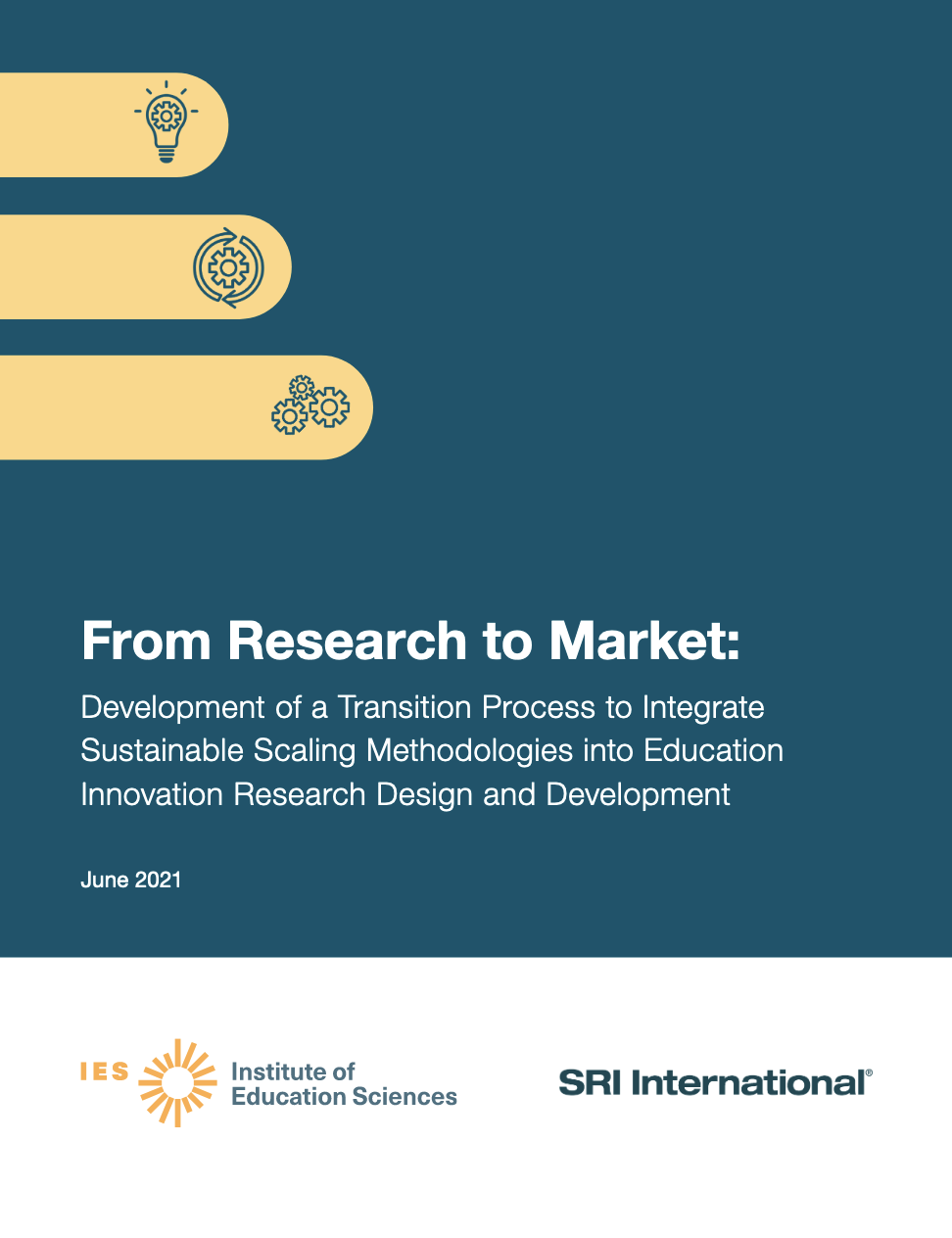May 1, 2023 | By Kerry Friedman and Zafeiria Panou

Wide use of evidence-based educational innovations has the potential to accelerate learning and enhance outcomes for all learners. However, even when educational products have evidence of effectiveness, they do not often achieve scale. In other words, they are often not broadly adopted by schools and districts.
A key reason many products do not achieve scale is that they are not a good fit for the needs of users and the market context. This exposes a divide between the research behind the products and their use in the field. SRI International’s LEARN Network is leading the charge to bridge this research-to-practice divide by adapting the Invent-Apply-Transition (I-A-T) Framework to support researchers and developers in bringing evidence-based educational products to scale.
The I-A-T Framework
SRI has used the I-A-T Framework to successfully transfer products from lab to market and scale innovations in health care, enterprise software, and robotics (to name just a few fields!). The framework includes strategic approaches that help innovators think about and design around challenges to scaling, use, and sustainability early in the development process. The approaches include mapping stakeholders, engaging end users, differentiating from other products in the market, and identifying scaling pathways.
For example, the I-A-T Framework specifies ways for innovators to bring end users and stakeholders into the development process as co-designers and co-evaluators. This early engagement provides the development team with greater insight into local contexts, problems of practice, and implementation needs. At the same time, it creates a community of early adopters who can testify to the innovation’s success.
The I-A-T Framework is simple, but the associated approaches and tools provide a rich road map that can help education experts take products from ideation to impact in classrooms. The three components of the framework are:
- Invent: the process of ideation and spending time to understand the use case and the need. The goal is to invent a solution concept that is likely to address an unmet need.
- Apply: providing the solution and showing potential applications. This step is where improvements are made to address the problem at hand. The goal is to get to product–user fit, demonstrating that the innovation satisfies the needs of end users.
- Transition: the route to market and getting to product–market fit. The goal is to demonstrate that the innovation satisfies the needs of all stakeholders, and thereby those of a large or strategic segment of the market.
Adapting the I-A-T Framework for Education
The LEARN Network is now adapting the I-A-T Framework to support scaling of evidence-based educational products. We began by modifying I-A-T based on input from a panel and advisory board that included experts who have successfully scaled educational innovations, as well as input from key education funders and decision-makers. Key learnings from this input that are shaping the adaptation of IAT include:
- Knowing the stakeholders and meeting their needs is critical. Often, the needs identified by developers are disconnected from the needs held by key stakeholders. Mapping stakeholders (including identifying gatekeepers) and seeking to understand their priorities can help developers design products that directly meet needs.
- Convenience and adaptability are as important as impact and cost, if not more. Aspects of convenience, such as ease of implementation and seamless fit with the local context, are crucial for successful scaling of products. Also, developers should acknowledge that when a product scales, some fidelity of implementation will be lost. This means they should identify a set of minimum core components that will ensure users realize the intended results even if other components are adapted.
- Attention to state policies can strengthen interest and support for adoption. Identifying state and local policies that could help or hinder adoption of a product is a fundamental part of initial market analysis. Developers who have successfully scaled products have stressed the importance of working with political influencers to support policies that drive adoption at the state and federal levels.
- Different pathways should be used for scaling products, depending on whether they augment, replace, or create a completely new solution. A narrow product developed by a single team is often insufficient for broad adoption on its own because it does not provide a complete solution. Developers need to review the market and assess how their product augments or replaces existing activities or creates a new activity. Then, they can plan for scaling accordingly.
To further adapt the framework for education, the LEARN Network integrating components of Liberatory Design and Implementation Science to focus even more on including stakeholder voices and accounting for local contexts. This integration will help us ensure that scaled products best serve students, particularly those from historically underserved populations.
The LEARN Network is also testing the I-A-T Framework and associated resources by supporting product teams that are preparing to scale innovations that accelerate learning. And to further refine the framework, we are conducting research to better understand how schools and districts procure products and programs to improve teaching and learning. As the framework is updated, we will share updates here on the LEARN Network website.
For more information on the I-A-T Framework, access the SRI report From Research to Market: Development of a Transition Process to Integrate Sustainable Scaling Methodologies Into Education Innovation Research Design and Development.
Tags: Application Innovation Research & Developers Transition

